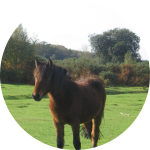|
Horse Stall contains all types of information for Horse Lovers.
There are a number of products branded horse gifts and products.
All gifts have a unique horse design that horse lovers and pony
owners will appreciate. Branded items include: t-shirts, sweatshirts,
sneakers, posters, skateboards, mouse pads, stickers, bumper stickers,
buttons, mugs, tote bags, invitations, greeting cards, neckties,
postcards, posters, prints and much more!
Horse Articles :: Horse Show Hunters
Show Hunters
|
|
English riding is divided into a variety of disciplines,
or styles or riding. From pleasure riding to competitive events,
each of these disciplines is unique and has its own set of
priorities and requirements. One of the most common disciplines
in North America is the hunters.
Once hunters were based on the sport of fox hunting. Several
horses and riders would follow the hounds across country to
chase down foxes. While this sport is alive and well, the
modern show hunter is a completely different type of horse.
The early show hunters were solid animals, suitable for both
the ring and the fields. They were cherished for their versatility
and athleticism. A good hunter was expected to be calm and
rideable, yet be athletic enough to make it around a series
of jumps without undue stress for horse or rider.
As time passed judges began placing the finer, fancier animals
higher in the classes than the old-style often less flashy
horses that were better suited to racing across uneven fields
in the foxhunt. Thoroughbreds and Thoroughbred crosses became
highly popular in the ring because of their lighter build,
long stride and athletic ability. Soon the hunter ring was
filled with bay thoroughbreds and the heavier field hunter
type was rarely seen.
Modern hunters are generally solid horses who are refined,
but still have substance. They are prized for their long,
low movement with as little knee action as possible. With
three clean gaits and a long, relaxed carriage they appear
to be gentle, relaxing horses to ride.
So what is a show hunter exactly? A hunter division is divided
into four classes, three over fences and one on the flat.
There are specific divisions for children of various age ranges,
for ponies of different heights, for green or experienced
horses, for amateur riders and for professional riders. Each
division is set at a specific height that is designed to suit
the expected ability level of horse and rider.
Over fences the horse is judged on a smooth, even way of going
with effortless jumping ability that does not throw the rider
out of the saddle. The horse is expected to canter the course
with an even 12' long stride (slightly shorter for ponies).
The horse should not speed up or pull back from the jumps
as it approaches them. Each jump is judged individually on
the horse's style as it goes over the jump. Ideally the horse
should jump with a nice bascule that utilizes the horse's
back and arcs the horse over the fence in a nice, smooth line.
With tight knees that are even in front the horse should stretch
its head and neck over the fence bringing its knees up towards
the chin. The hindquarters should follow smoothly with tight
hocks and form without undue effort. Observers should get
the impression that the entire performance is effortless.
Between the fences the horse should be calm and relaxed. Turns
should be made with wide, smooth corners. Speed is not a priority,
so the softer, more even way of going will always pin over
a fast, choppy ride. The ideal carriage of the horse varies
from judge to judge, but generally the horse should be long
and relaxed with its head slightly above the vertical so it
can see ahead of itself in order to approach the fences.
Courses are designed in a combination of straight lines, bent
lines, single jumps and diagonals. The plan is generally quite
simple and easy for horse and rider to follow. When looking
at the jumps themselves, they are generally painted in natural
colours and are designed to look like things that you might
find when riding out in the fields.
On the flat, horses are judged on the quality of their movement,
which should be long and low, with little knee action. If
the horse has a little "float" to their stride it will catch
the judge's eye. Transitions should be smooth and immediate.
At no point should it look as though the horse is giving its
rider a hard time, nor should the rider show signs of difficulty
in the ride. While equitation is not a priority, a rider who
can "sit pretty" will show a horse to better advantage compared
to a sloppy, yet effective rider.
While some people ridicule show hunters as being boring and
easy, there is a lot of training and riding skill that goes
into a top hunter. Admittedly hunter jumping is not nearly
as trying or complicated as jumping for the jumper ring, but
a truly excellent hunter has every bit as much talent as a
top jumper.
Showing in the hunter ring is a great way for riders to get
started in the horse show world. By building up good habits
over fences and on the flat both horses and riders set up
a solid foundation for more strenuous competition in the long
run. It is a great discipline for riders with confidence issues
with many lower-level divisions available.
The show hunter ring is highly competitive and can be a great
direction to focus your riding skills. While the higher levels
can be very expensive, the lower levels can be enjoyed with
just about any horse and by just about any english rider.
About the Author
Philippe Wiskell is a writer for HorseClicks, classifieds
of horses
for sale
|
|
|


